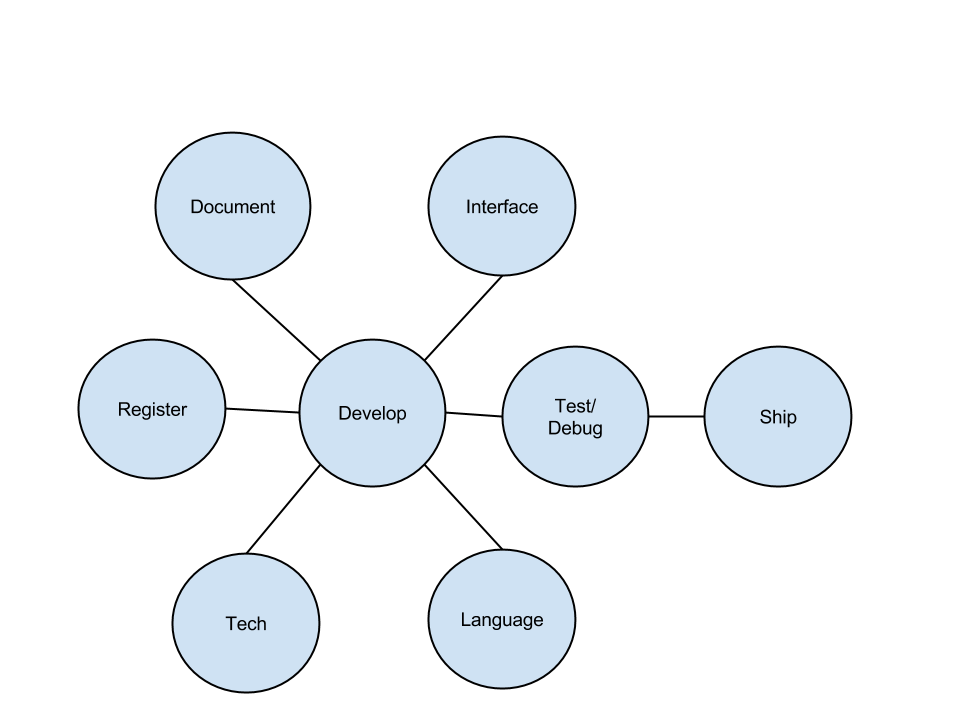Like an iceberg, the portion that you actually see of an iOS App is just the minor part of a bigger and well-defined development process that starts from registering a developer account to deploying your App to the App Store.
If you want to start developing iOS Apps, there are three things that you will need as listed below:
- A Mac computer running OS X 10.9.4 or later
- Xcode
- iOS SDK
A Mac computer is needed to develop Apps because Apple’s IDE called Xcode only runs on platforms running the OS X. If you have those three items up and running, you can advance to the next step, which is defining the concept of your app.
To start off, you will need a good concept definition of your mobile app. I recommend starting from a sketch of the views, this will help you visually comprehend your creative thoughts for your application. Following this step, create a check-list of the app features keeping into consideration how they will look on all different devices’ screen sizes. After you have organized your thoughts and have a general plan and direction of the application create a virtual sketch, remember to think through all the code and how it will be organized during this stage. The final step is to combine everything together to build the final product.
Apple’s basics tutorial suggests that we ask ourselves four questions before starting the development. The first question:“Who is your audience?” This question will help you focus on who will be interested in using your app, as well as providing hints on how to build it to satisfy your target market. The second question: “What is the purpose of your app?”. If you can answer this question, you can also list the main objectives related to you project. Question three out of four is “What problem is your app trying to solve?” The answer to this question must be completely clear, the first step to create something useful and effective, is to define the problem accurately. The final question: “What content will your app incorporate?”. If you have all the content that you need, it is easier to work on the views and estimate how many views you will have to create. Once you have your content figured out, the next thing to do is to think about how you will spread out the content in a visually pleasing way on your Apps interface.
The development IDE combined with the Apple’s SDK and the Objective-C programming language allow us to use design patterns, such as the MVC architecture to build the final product. Dividing your application into layers is an important “best practice” when it comes to software engineering. The “View” layer has all the scripts behind the views that will receive user’s input. It gathers information and works together with the “Controller” layer to process data and give an output back to the user. Also, the Controller layer is responsible for delegating the information from the persisting task to the “Model” layer. These are the three application layers that you must have if you are willing to use the MVC architecture on your project.
Since the software will be split into layers, an object-oriented language is a good call. Let’s say that you want to update your database framework to a completely new technology recently released. You can rewrite your entire Model layer without worrying about the rest of the application. When you finish your changes, your Controller classes will still be the same thing, pointing to the same functions that you had on the Model layer. The difference now is that the Model functions use different methods to persist the data.
Objective-C is the language used to develop Apps, which simplifies the app development process because it is object-oriented. Also, all the skills that you may already have on C programming will be used, since Objective-C is considered a thin layer on top of the C language. That means that all C code will compile in an Objective-C environment. The main gain here is that Apple’s SDK has dozens of frameworks that will help you use different data types, such as collections, strings or numbers.
Finally, once you are done with your App development, it is important to follow a workflow in order to ship you final product. The development phase is the core of all the phases. This workflow is defined as shown in the picture below:

A Developer account is required to submit the App for a test/debug phase. This phase aims to find eventual bugs on your code, and can be described as an SQA. After you have your application tested, you need to enroll it with Apple’s iOS Developer Program to launch your App on their App Store, which will cost you $99 a year. Following our suggested process and recommendations will help you start developing as many iOS Apps as desired. Contact us if you are considering developing an App for your company.